#475 b.c.
Text



~ Jade Bird Subduing Two Snakes.
Place of origin: China
Period: Zhou dynasty, Warring States period
Date: 475-221 B.C.
#ancient#ancient art#history#museum#archeology#asian arts#archaeology#jade#bird subduind two snakes#bird#snakes#china#chinese#zhou Dynasty#Warring States period#475 b.c.#221 b.c.
623 notes
·
View notes
Text
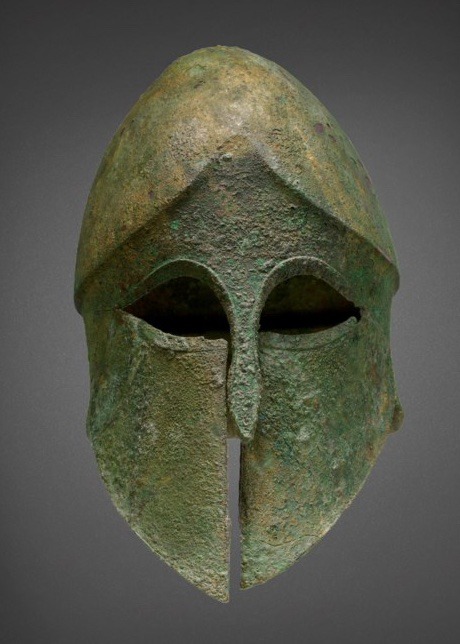





A GREEK BRONZE CORINTHIAN HELMET
LATE ARCHAIC TO EARLY CLASSICAL PERIOD, CIRCA 525-475 B.C.
#A GREEK BRONZE CORINTHIAN HELMET#LATE ARCHAIC TO EARLY CLASSICAL PERIOD#CIRCA 525-475 B.C.#bronze#bronze helmet#military equipment#ancient artifacts#archeology#archeolgst#history#history news#ancient history#ancient culture#ancient civilizations#ancient greece#greek history
210 notes
·
View notes
Text

Attic Panathenaic Amphora
500–480 B.C.
Attributed to Kleophrades Painter (Greek (Attic), active 505 - 475 B.C.)
On view at Getty Villa, Gallery 103, Athenian Vases
64 notes
·
View notes
Text
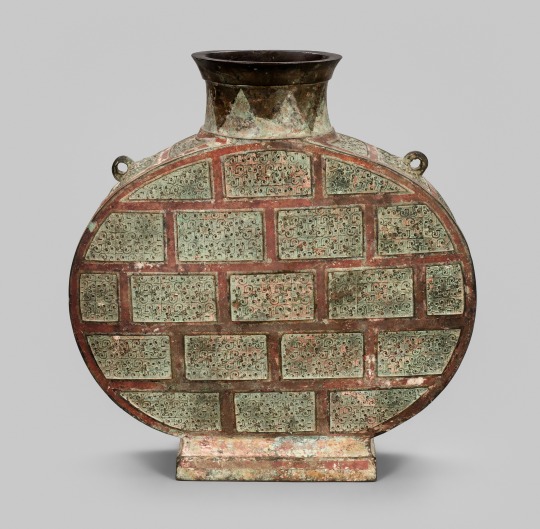
Flask (bianhu)
China, Eastern Zhou dynasty, Warring States period (475–221 B.C.)
This canteen-shaped container was probably modeled after leather flasks designed to be slung from the shoulder by cords. The bricklike pattern of inlaid copper may allude to this cord wrapping. A stamp carved with a pattern of feather-curls was repeatedly impressed into the clay mold to create this intricate surface decoration.
21 notes
·
View notes
Text
Nossis of Locri and Aphrodite
I love to learn about how women worshipped the gods in ancient times. Nossis was a poet from Locri (modern Italy) in 3th century B.C who dedicated many poems to Aphrodite.
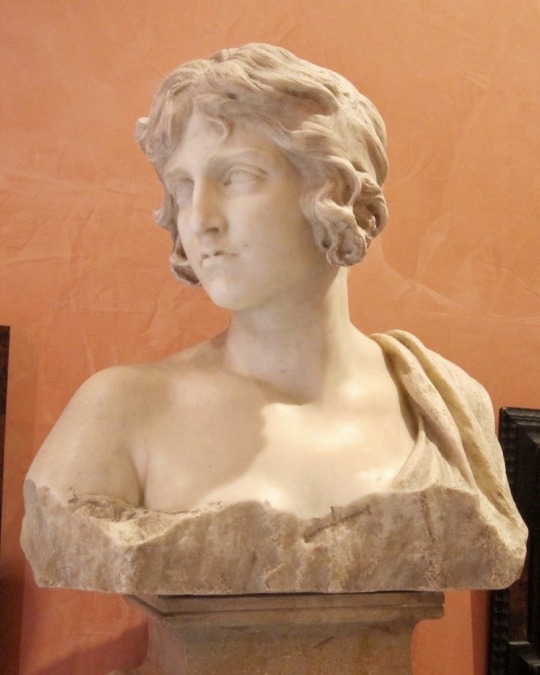
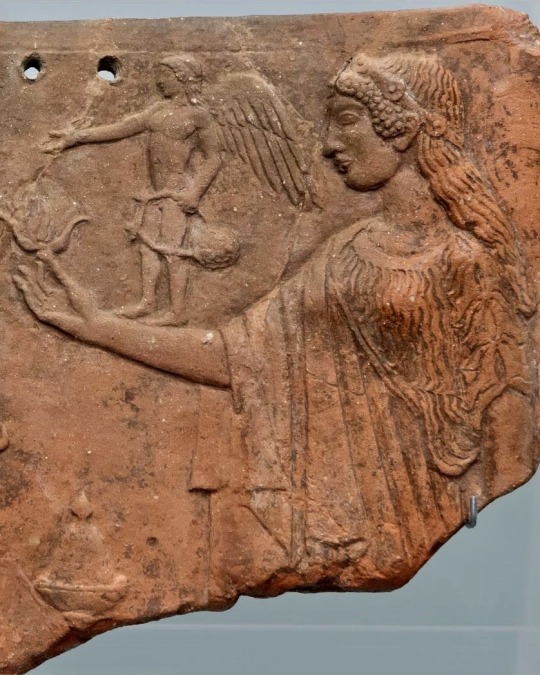
Left: Bust of Nossis | Right: Clay tablet depicting Aphrodite and Eros made in 475 B.C Locri
“Let’s leave for the temple and go to see Aphrodite’s
Sculpture—how it is made so finely in gold.
Polyarkhis dedicated it after she earned great
wealth from the native glory of her body.”
“I expect that Aphrodite will be pleased to receive
As an offering from Samutha, the band that held her hair.
For it is well made and smells sweetly of nektar,
That very nektar she uses to anoint beautiful Adonis.”
“There is nothing sweeter than love: all other blessings
Take second place. I even spit honey from my mouth.
This is what Nossis says. Whomever Kypris¹ has not kissed,
Does not understand her flowers, what kinds of things roses are.”
¹ Kypris is another name for Aphrodite. It means Cyprian.
#greek mythology#greek gods#hellenic polytheism#hellenic worship#aphrodite deity#aphrodite#aphrodite worship#nossis of locri
254 notes
·
View notes
Photo
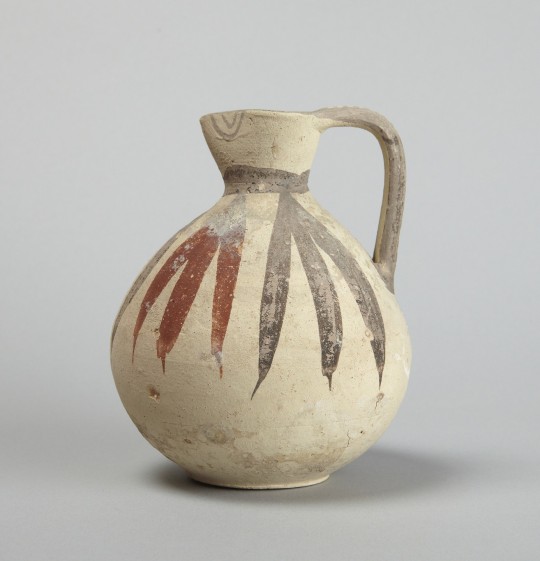
Oenochoe (Bichrome V Ware), 600–475 B.C./ Cypro-Archaic II / Cypriote
10 notes
·
View notes
Text
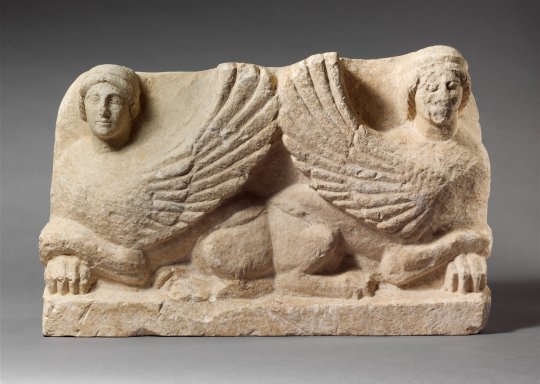
Limestone funerary stele with antithetical sphinxes
ca. 475–450 B.C.
Cypriot
8 notes
·
View notes
Photo

Happy Face
Cypriot limestone statue ca. 475 to 450 B.C., Metropolitan Museum of Art https://www.metmuseum.org, Greek and Roman collection. Fifth Avenue and 82nd Street, Upper East Side, New York City.
13 notes
·
View notes
Quote
You cannot step twice into the same river, for new waters are ever flowing
Heraculitus (534 - 475 B.C)
0 notes
Text
Xia Dynasty (unconfirmed)(ca. 2100–1600 B.C.)
Shang Dynasty (ca. 1600–ca. 1050 B.C.)
Zhou Dynasty (ca. 1050–256 B.C.)
-Western Zhou (ca. 1050–771 B.C.)
-Eastern Zhou (ca. 771–256 B.C.)
-Spring and Autumn Period(770–ca. 475 B.C.)
-Warring States Period(ca. 475–221 B.C.)
Qin Dynasty(221–206 B.C.)
(Western) Han Dynasty (206 B.C.–220 A.D.)
Six Dynasties (220–589) A.D.
-Eastern Wu dynasty (222–280)
-Eastern Jin dynasty (317–420)
-Liu Song dynasty (420–479)
-Southern Qi dynasty (479–502)
-Liang dynasty (502–557)
-Chen dynasty (557–589)
Three Kingdoms (220–265) A.D.
Wei
Wendi 220–226 A.D.
Mingdi 227–239 A.D.
Shaodi 240–253 A.D.
Gao Gui Xiang Gong 254–260 A.D.
Yuandi 260–264 A.D.
Wu
Wudi 222–252 A.D.
Feidi 252–258 A.D.
Jingdi 258–264 A.D.
Modi264–280 A.D.
Shu Han
Xuande 221–223 A.D.
Hou Zhu 223–263 A.D.
Western Jin Dynasty (265–317) A.D.
Sixteen Kingdoms (304 - 439) A.D
-Han Zhao (304-329) A.D.
-Cheng Han (304-347) A.D.
-Later Zhao (319-351) A.D.
-Former Liang (320 - 376) A.D.
-Former Yan ( 337–370) A.D.
-Former Qin ( 351–394) A.D.
-Later Yan ( 384–409 ) A.D.
-Later Qin ( 384–417 ) A.D.
-Western Qin (385–400, AD 409–431) A.D.
-Later Liang (386-403) A.D.
-Southern Liang (397–404, AD 408–414) A.D.
-Northern Liang ( 397–439 ) A.D.
-Southern Yan ( 398–410 ) A.D.
-Western Liang ( 400–421) A.D.
-Hu Xia (407–431) A.D.
-Northern Yan ( 407–436) A.D.
Eastern Jin (317-420) A.D.
Period of Northern and Southern Dynasties 386–589 A.D.
-Northern Wei ( 386–535) A.D.
-Eastern Wei ( 534–550) A.D
-Western Wei
Sui Dynasty (581–618)
Tang Dynasty (618–906)
Five Dynasties (907–960)
-Later Liang
Taizu 907–910
Modi 911–923
-Later Tang
Zhuangzong 923–926
Mingzong 926–934
Feidi 934–935
-Later Jin
Gaozu 936–944
Chudi 944–947
-Later Han
Gaozu 947–948
Yindi 948–951
-Later Zhou
Taizu 951–954
Shizong 954–960
Liao Dynasty (907–1125)
Song Dynasty (960–1279)
-Northern Song (960–1127)
Taizu 960–976
Taizong 976–997
Zhenzong 998–1022
Renzong1023–1063
Yingzong 1064–1067
ShenzongZhezong 1086–1100
Huizong 1101–1125
Qinzong 1126–1127
-Southern Song (1127–1279)
Gaozong 1127–1162
Xiaozong 1163–1189
Guangzong 1190–1194
Ningzong 1195–1224
Lizong 1225–1264
Duzong1265–1274
Gongti 1275–1276
Duanzong 1276–1278
(Di Bing)1278–1279
Yuan Dynasty (1279–1368)
Ming Dynasty (1368–1644)
Qing Dynasty (r. 1644–1911)
0 notes
Photo
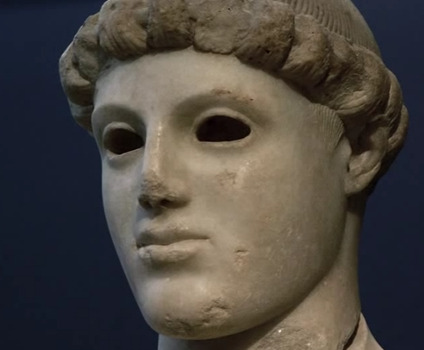
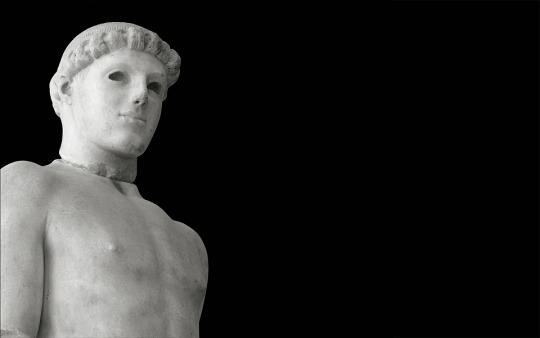
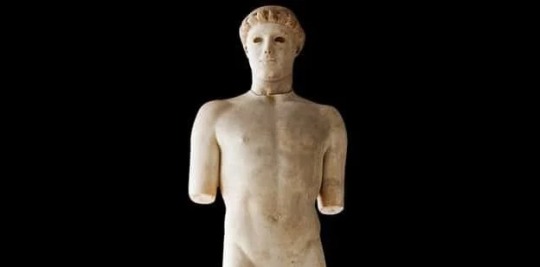
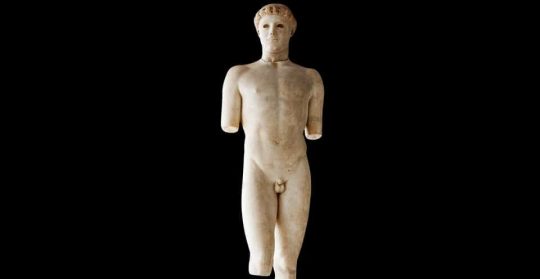

Who Beheaded the Kritios Boy, the Masterpiece of Ancient Greek Art?
The Kritios Boy, a statue displayed at the Acropolis Museum is one of the most important works of ancient Greek art and the most characteristic of the so-called “Severe Style.”
The statue’s torso was found in 1865 to 1866 southeast of the Parthenon,while the head was found in 1888 near the south walls of the Acropolis. Archaeologists have dubbed it the “Kritios Boy,” after the name of the sculptor believed to have created it.
The “Kritios Boy” is depicted standing in the nude. He supports his weight on his left leg while the right one remains bent at the knee in the characteristic posture of the Severe Style.
Ancient Greek art masterpiece
His expression is solemn and his eyes, which were originally crafted from another material, have not survived.
His hair, which follows the shape of his scalp, is tightly gathered around a ring with a few scattered strands falling on his temples and the nape of his neck. Traces of red dye are preserved on his hair.
The attribution of this statue to the sculptor Kritios is based on the similarities it presents with the statue of Harmodios from the bronze group of the Tyrannicides, a work of Kritios in collaboration with Nesiotes.
This group, known to us today through marble copies of the Roman period, was erected in the Agora of Athens.
Who this statue portrays, however, is not known. Some scholars believe he represents a young athlete, the winner of an event in the celebration of the Greater Panathenaia.
Others claim he depicts a hero, most likely Theseus. Moreover, they link the dedication of the statue on the Acropolis with the activities of 476 to 475 BC, when Kimon transferred Theseus’ bones from the island of Skyros to Athens.
Who beheaded the Kritios Boy statue?
The statue is a touchstone of Greek art. It features prominently in textbooks and it travels to major international exhibitions.
But there is still a mystery over who beheaded the statue in antiquity with an axe-blow to the back of the neck and why.
Early scholars blamed the Persians, who sacked the Acropolis during their invasion of Greece in 480 B.C. More recently, the statue has been dated to the Early Classical period by art historians; this would then imply that the Athenians themselves did the deed.
It is clear that the Athenians did, upon occasion, behead statues; there is no other explanation for the many heads (severed from their no longer preserved bodies) that have been excavated from the Acropolis fill.
Rachel Kousser, a professor of art history at the City University of New York, is pretty sure that the beheading was the work of the Persian invaders.
Writing for the Research Bulletin of The Center for Hellenic Studies, she explains:
Many of the Acropolis korai—dated prior to 480 B.C., and indisputably attacked by the Persians—have parallel injuries, including not only the blow to the back of the head, but also the missing hands and feet.
So, too, mutilation in 480 B.C. would help to explain why the Kritios Boy was interred so soon after it was set up (otherwise, one has to assume it was created in the 470s, and ‘killed’ in thirty years or less, a rather short life expectancy for a sturdy marble statue).
I would guess that the statue was set up shortly before 480, injured, and then buried—all on the Acropolis, since as an inhabitant of sacred space, it could never lose its sanctity.
But it is hard to be sure; this murder mystery from 2,500 years ago offers few clues. What we can say for certain, though, is that this ‘murder’ testifies to the significance of the image, so powerful it had to be ‘killed’ to be negated.
By Tasos Kokkinidis.
#The Kritios Boy#Who Beheaded the Kritios Boy the Masterpiece of Ancient Greek Art?#the sculptor Kritios#sculture#marble sculpture#greek marble sculpture#ancient artifacts#archeology#archeolgst#history#history news#ancient history#ancient culture#ancient civilizations#ancient greece#greek history#greek art#the parthenon
42 notes
·
View notes
Text
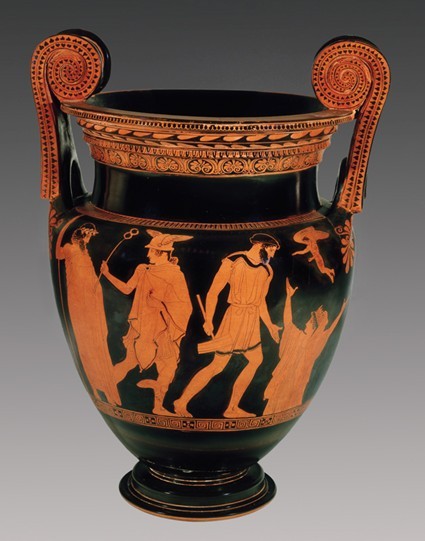
Attributed to Recalls Kensington Class, Krater of Epimetheus Receiving Pandora, ca 475 - 425 B.C., The Ashmolean Museum
Reference 17
0 notes
Photo
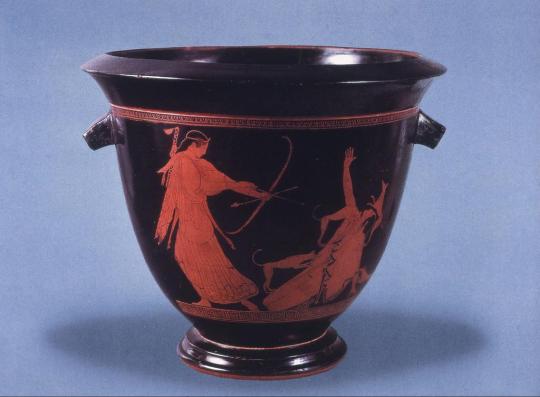
Pan Painter, fl. 475-450 B.C. Bell-Krater: Obverse: Artemis Slaying Actaeon. n.d. Images. Museum of Fine Arts, Boston. https://jstor.org/stable/community.13576605.
0 notes
Text


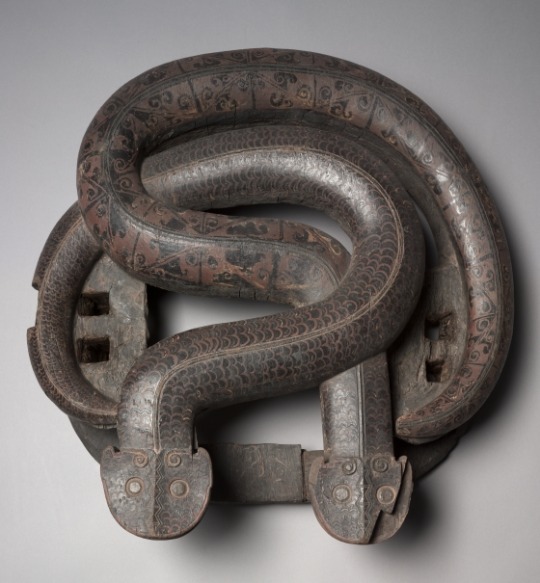

~ Cranes and Serpents.
Date: 475-221 B.C.
Place of origin: China, reportedly from Hunan province, Changsha, Warring States period (475-221 B.C.), State of Chu (ca. 1046-223 B.C.)
Medium: Lacquered wood with polychromy.
#ancient#ancient art#history#museum#archeology#ancient Asia#ancient china#china#cranes and serpents#crane#serpent#snake#hunan province#warring states period#475 b.c.#221 b.c.#5th century B.C.#3rd century b.c.
581 notes
·
View notes
Photo

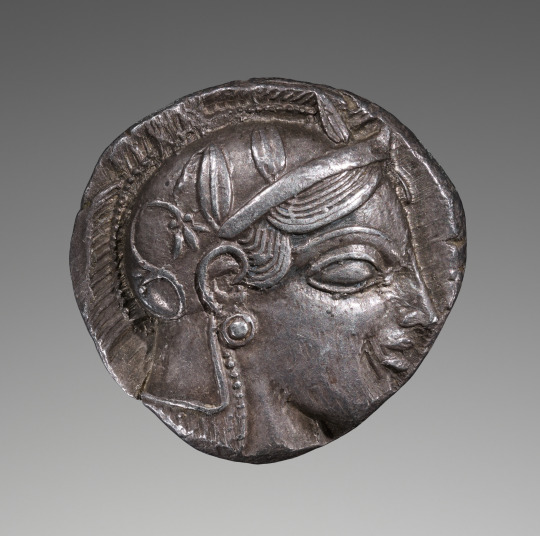
Back and front of silver coin (tetradrachm of Athens, 475–465 B.C.) showing an owl and olive branch and Athena.
Images and text information courtesy The Getty.
This image is available for download, without charge, under the Getty's Open Content Program.
478 notes
·
View notes
Photo
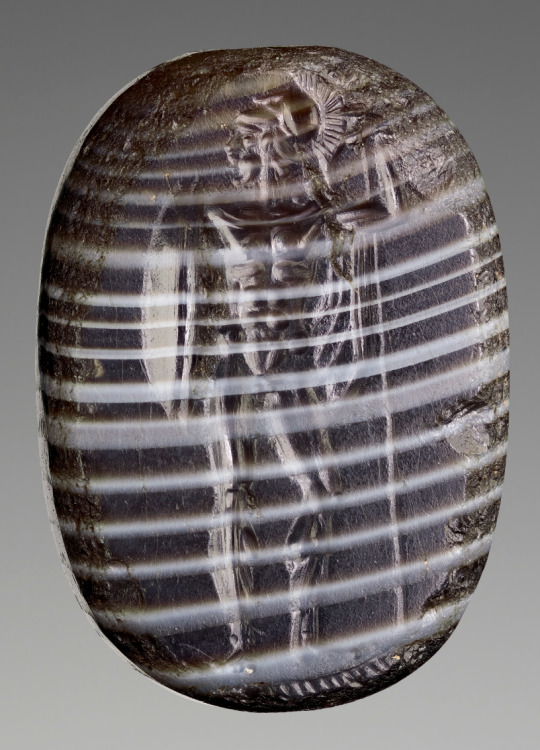
Engraved Scaraboid with a Standing Warrior - Banded agate
Greek, about 475 B.C.
The J. Paul Getty Museum
71 notes
·
View notes